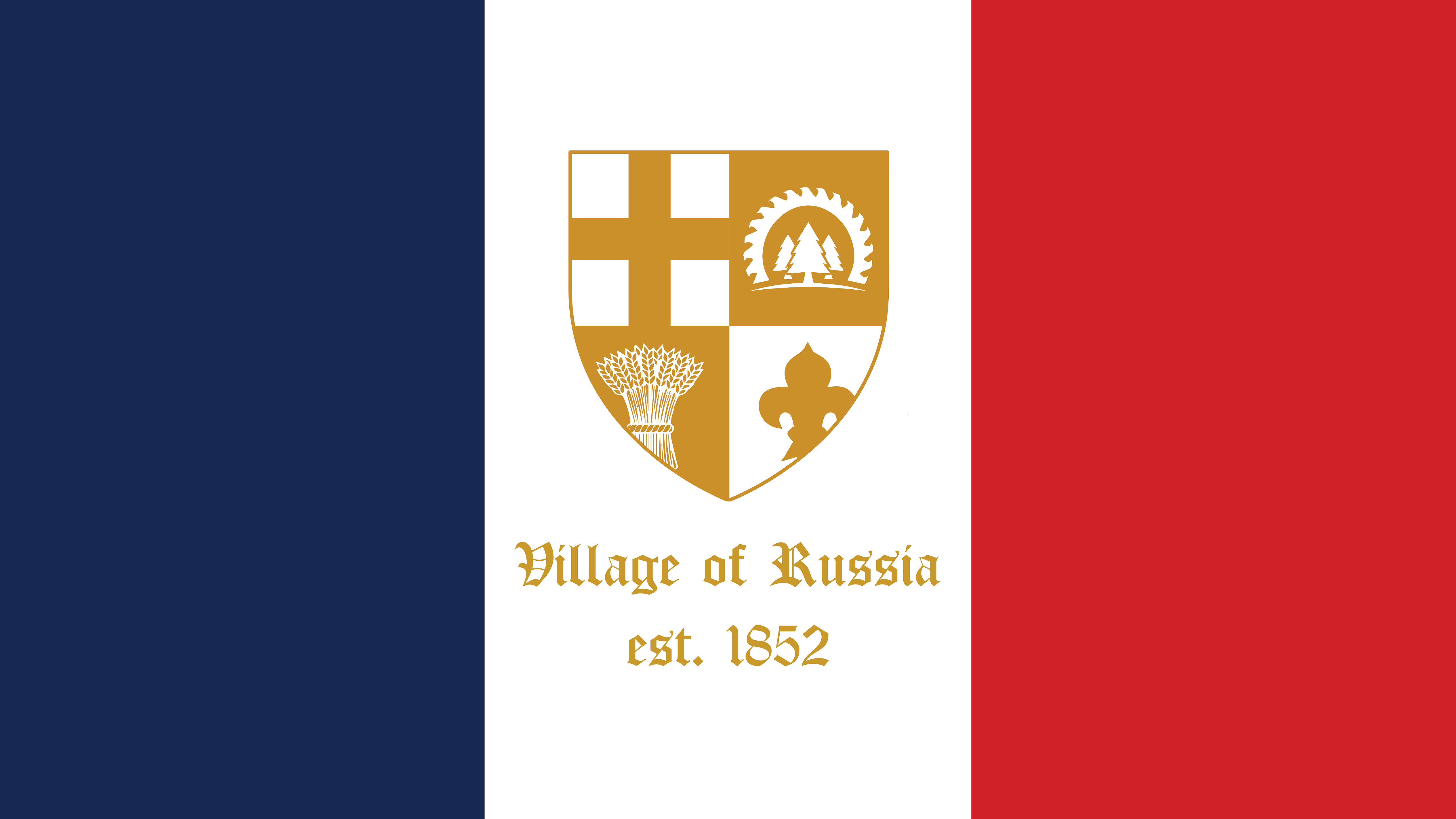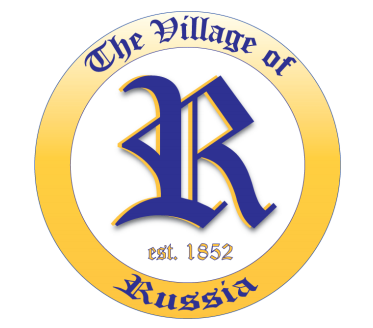
Description of the Village of Russia Flag:
Russia is a proud village built upon Christian principles, hard work, and a close-knit, community-minded population. Symbols and colors were selected to underscore our French and Catholic heritage in addition to how agriculture and industry largely contributed to the development of the community over time.
Symbolic Representation:
Crest shape: In the early part of the nineteenth century, a large number of emigrants from Alsace, Lorraine, and other regions of France settled in the southwestern part of Shelby County and the adjacent portions of northeastern Darke County. One of the settled areas was Russia. The crest shape pays homage and mimics that of both Alsace and Lorraine.
Colors: The vertical tricolor of dark blue, white, and red reflect the colors of France’s flag during the years in which Russia was officially established (1852). Many families in the area still carry on the lineages of the original French settlers. The burnt golden color of the lettering and crest signifies a bountiful harvest and Russia’s agricultural heritage both past and present.
Sawmill: Russia was founded by Lewis Phillips, who purchased and plotted the land where the village now sits. Phillips was also the first businessman in the village, opening a grocery store in 1853. Later, settlers soon founded a dry goods store, blacksmith shop, grain elevator and multiple sawmills. Russia's economy was once heavily dependent on its sawmills and this symbol pays respect to all industries past and present that find their roots in Russia’s soil.
Cross: Since the original settlement of Russia to present day, its Roman Catholic faith has been the foundation and epicenter of the community. The first chapel was built in 1846 and the first church was dedicated in 1852 to Saint Remigius, the patron saint of France.
Fleur de lys (or Fleur de lis): The lily flower, in its’ stylized form, has been used to represent France since the 12th century. Being a historically Catholic nation, the fleur-de-lys has collectively embodied the religious, political, dynastic, artistic, emblematic, and symbolic connotation of France.
La gerbe de blé: A sheaf of wheat symbolizing harvest and abundance, with its tied, knotted stems symbolizing convergence. This French symbol also gives nod to one of the stories behind Russia’s namesake* and brings to mind the agricultural backbone of the community by honoring the farmers who call Russia home.
Many sources were referenced in creating this flag. Levi Francis and Trent Francis were the original creators of the flag. Graphic design was provided by Sierra (Heaton) Dyer.
*Accounts for how Russia received its’ name: (1) Some of the earliest settlers were French speaking Suisse who had served under L. Napoleon Bonaparte during the war with Russia (Napoleonic Wars). According to tradition, the village's name commemorates a battle these veterans had fought in Russia. (2) Early settlers arrived in the dead of winter with several inches of snow on the ground and cold temperatures. In addition to the rolling countryside, this reminded them of Russia in Europe. (3) Some early settlers farmed Russian wheat here and it produced excellent wheat crops, thus earning its’ name.
